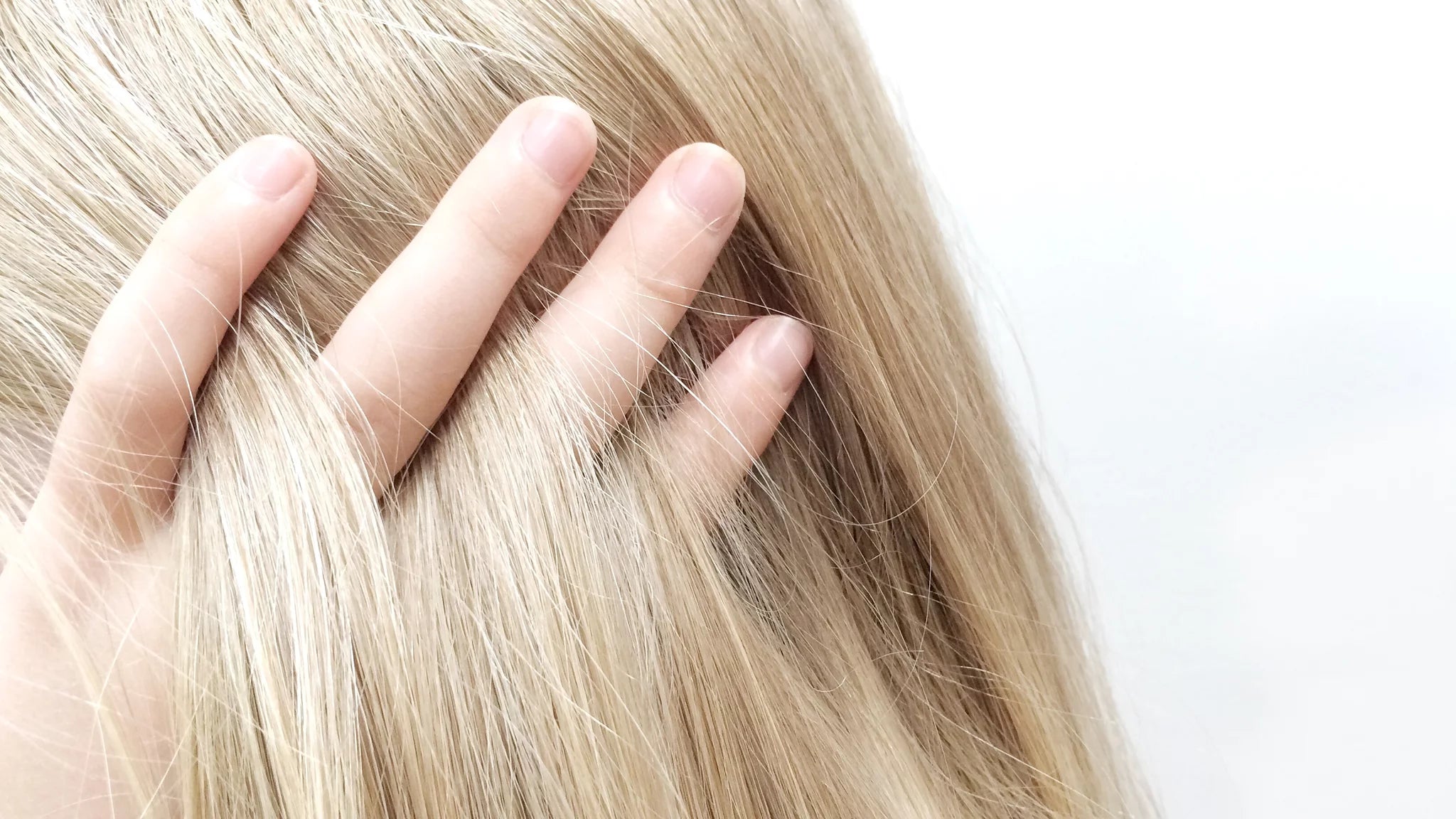It can be exhausting and expensive to try and find the right products and right routine for your hair, often leading to a cabinet full of things you’ve tried that haven’t worked. Finding the right routine for your unique hair biology can be even harder when you don’t know things like your hair texture or scalp oil level.
Many people think that hair texture is simply how their hair feels – maybe it feels dry and brittle, or oily and heavy – but the truth is that the way your hair feels is not technically your hair’s texture. Hair texture is something you’re born with, despite how the state of your hair may change over time.
Many people confuse hair texture with hair density, which leads to choosing the wrong products and not getting the right results – so how can you identify your actual hair texture, and the needs associated with it?
What is Hair Texture?
Hair texture refers to the degree of thickness of each individual hair strand. Without getting too technical, hair texture ranges between three levels: coarse, medium and fine. Each hair texture has its own set of traits that set it apart from other textures, influencing both the care and treatment that they need.
How To Measure Hair Texture
Visiting a store near you with a Strands Smart Scanner will give you a high-tech read on your texture, but there are ways to measure this at home if you don’t have a location close by.
You can also grab a stray strand that has fallen and lay it on a flat, white piece of paper – if it’s not easy to see and doesn’t hold styles well, it’s likely fine. If the strand is visible, not hard to feel and holds styles fairly well, you probably have medium-textured hair. If the individual strand is highly visible, easily felt between fingertips, and holds styles well, your hair texture is likely considered coarse.
What is Hair Density?
While hair texture is the thickness of the individual strands, hair density refers to the number of strands that grow per square inch from your scalp. Your hair’s density can vary significantly throughout your life, changing over the course of years and through adulthood. Sparsely placed hair fibers are classified as low-density hair (think a skinnier ponytail), while strands snugly grouped together across the scalp will land you in the category of high-density hair. Anywhere in between simply means you have medium-density hair.
How To Measure Hair Density
Just like hair texture, there are three basic density levels: low, medium and high-density. To find your own hair density, simply gather the front area of your hair and pull it over to the side, revealing the scalp. If your scalp is clearly visible through the strands, you likely have low-density hair, whereas limited scalp visibility likely means you have high-density hair. If your scalp is neither clearly visible nor hard to see, you likely have medium hair density.
You can also measure density with the ponytail test – simply pull your dry hair into a ponytail and loop it with a ribbon to measure the circumference of your ponytail. Place the ribbon next to a ruler. If it’s less than two inches, your hair is likely low-density. If it measures at four inches or more, your hair is on the denser side.
Texture and Density: The Mane Differences
Hair texture and hair density work together to influence how full your hair looks to the naked human eye. Where texture refers to the thickness of the individual strands, hair density refers to the amount and concentration of strands that grow from your scalp.
Thick strands loosely scattered across your scalp will likely lead to an appearance of thin hair, whereas a head full of fine yet abundant strands will lead to an appearance of thickness and volume.
Coarse vs. Thick Hair Strands: Is there a Difference?
The short answer is yes! Coarseness refers to the texture of the individual strands, whereas thickness refers to the high density and concentration of those strands.
Coarse and thick hair aren't mutually exclusive. Some people have thick fine hair, and some have coarse, thin hair.
Hair care for different hair textures
Your hair care needs change based on the texture and density of your hair, so it’s essential to identify both to ensure you’re meeting the needs of your unique hair biology. Where hair texture is something you’re born with, hair density varies and changes throughout your lifetime.
One of the most important parts of your routine when managing texture is conditioner – all hair types benefit from conditioning, but it’s important to find the right balance of moisture and weight for your hair texture.
Fine
Fine hair – thick or thin – is better suited to products formulated for fine hair. Specifically, formulas that won't add weight to the hair strands and cause the scalp to appear greasy or oily. Hero ingredients like the jojoba seed oil in our Lightweight Conditioner work to provide hydration that won’t weigh down fine-textured strands. Fine-textured hair is also more susceptible to damage from things like heat or chemical treatments, so it’s important to get regular trims to remove split ends and minimize breakage. Adding a targeted dose to your conditioner, like the Anti Breakage Dose will help to boost the resilience and elasticity of fine-textured strands while minimizing damage.
Medium
Those blessed with medium-textured hair typically require less maintenance – so the focus is on nourishing your tresses to maintain hydration and suppleness with the nutrients your hair needs. Choosing a conditioner specifically formulated for medium hair, like our Well-Balanced Conditioner, will help keep your strands happy with hero ingredients like coconut oil providing ideal moisture levels for your specific strands.
Coarse
While coarse strands typically don’t lack volume, they do tend to frizz and poof more easily (as you probably know from humid weather!). Coarse-textured strands tend to be more dehydrated than their counterparts, leading to more intense moisture needs. That’s where rich, deep-moisture products like Deep Conditioners come into play! Using hero ingredients like Shea Butter, the Deep Conditioner locks in moisture, softens strands, detangles and improves manageability. Adding targeted doses to your Deep Conditioner can help supercharge the results of your routine – add the Moisture Boost dose if your extra-coarse strands aren’t quenched with deep conditioner alone, or the Anti-Frizz Dose to protect your hair against humidity for increased frizz control.
The Bottom Line: Hair Texture
All textures of hair have different needs, which is why it’s essential to learn more about your unique hair biology and use products tailored specifically for your hair care needs. Texture aside, a multitude of factors impact the needs of your strands – things like color or chemical treatments, the use of heat, environmental factors and more.
Visit a store near you with a Strands Smart Scanner today to get an accurate measure of your texture, or leverage the tips you’ve learned here and take the Strands Test to find out which routine is right for you.

